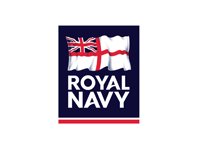British Army and Royal Navy Skiers Run World Cup Event
Published: 10/05/2011
British Army and Royal Navy skiers planned, organised and ran the opening event of the 2010 World Cup Telemark series in Austria this month, marking the first time that Britain has run an International Ski Federation world cup ski event.
The winter sports event took place in Rauris, Austria, between 11 and 12 January 2010, with 19 female and 49 male racers competing from Norway, Sweden, Denmark, Germany, Austria, Switzerland, France, Italy, Spain, Slovenia, Finland, and, of course, Great Britain.
For the last three years the Army Telemark Ski Association has run the Army and Navy (and this year GB National) Telemark championships in Rauris, so when the opportunity arose to run a World Cup Telemark event over the same period, it was seized with little hesitation.
The event offered Service racers, the majority of whom have recently returned from or are about to deploy on operations, the stimulation of being an integral part of a top class event ahead of their own championship races.
Telemark ski racing makes a great spectator sport. The discipline is characterised by the graceful telemark turn and, at this top level, by the perilous and gymnastic nature of the athlete's descent.
Telemark turns are led with the heel flat on the outside ski (the downhill ski at the end of the turn), while the inside (uphill) ski is pulled beneath the skier's body with a flexed knee and raised heel.
Telemark skiing is also known as 'free heel skiing'. And, unlike alpine skiing equipment, the skis used for telemarking have a binding that only connects the boot to the ski at the toes, just as in cross-country skiing.
The races offer a variety of challenges, apart from the usual race gates, which reflect Telemark's historic roots, dating back to Norwegian skier Sondre Norheim's first use of the technique in 1868.
The Telemark Giant Slalom races include a jump where racers must clear a minimum distance or take a time penalty, and the Telemark Sprint races include a 360-degree banked-turn and skatingRoyal Navy, royal navy, RN, rn, Sking, 2010 World Cup Telemark series, section, in addition to the gates and jump.
In all races, skiers are required to turn in a proper Telemark style or face further time penalties, so results for each race reflect two runs down the course, with the combined times corrected by the addition of any penalties.
This year's Telemark Sprint race was spectacular. Most of the course was in sight of the finish area so, having cleared a demanding hillside of Giant Slalom gates, racers executed huge jumps in clear view of the spectators, often recovering their balance from unfeasible landings (or not, in the case of Matija Liska from Slovenia, who made such an enormous jump that there was no room for him to recover and he ended up wrapped in all the safety netting).
The course continued at breakneck speed through the last few gates to the 360-degree turn, or rappelojke, set in the heart of the finish area. Racers entered the banked-turn fast, stepping their way round and losing speed before they exited, crossing their entry track to start the final 150-metre skating section to the finish.
All muscles were burning by this stage, so it was not uncommon to see racers half-collapse over the finish line, having given it literally all that they had.
Andreja Jovan, Telemark World Cup Coordinator, said afterwards:
"The racers were very pleased with the start of their season; the courses gave some great challenges and we are really satisfied with the way in which the event was run by the British Army. We would be very pleased if the British Army ran a world cup race for us again in 2011."
While the event was run by a combination of Army Telemark committee members and volunteers from amongst the Army, and Navy Telemark skiers, the GB Telemark team were very much in the competition.
Originally drawn mainly from the Services, the GB Telemark team has growing UK civilian representation, and has gone from strength to strength in the three years since its reformation under team captain Major Andrew Clarke.
International competition is strong, but the GB team managed creditable results at this demanding opening event. Overall, winners for the women's and men's Telemark Giant Slalom were Amelie Reymond and Chris Lau from France, while the Telemark Sprint winners were Amelie Reymond and Eirik Rykhus (Norway).
